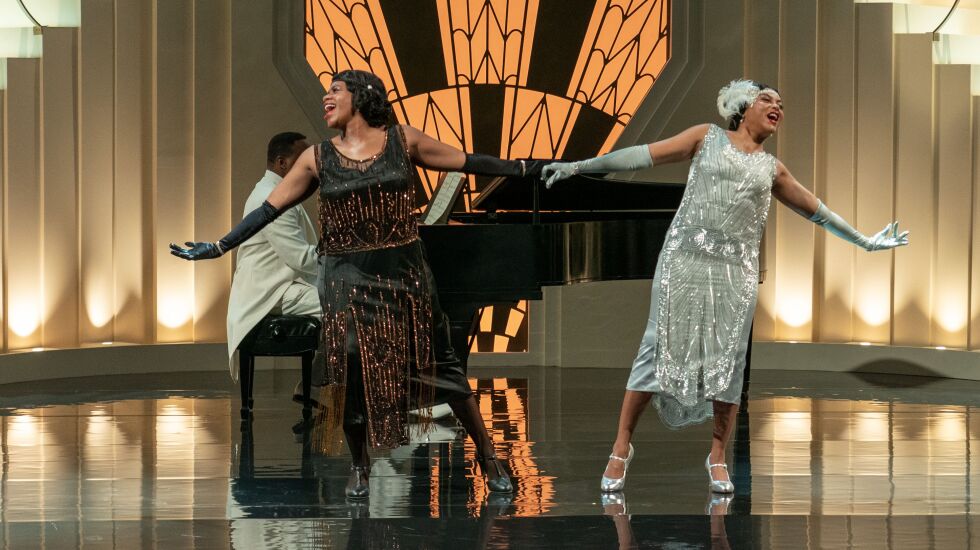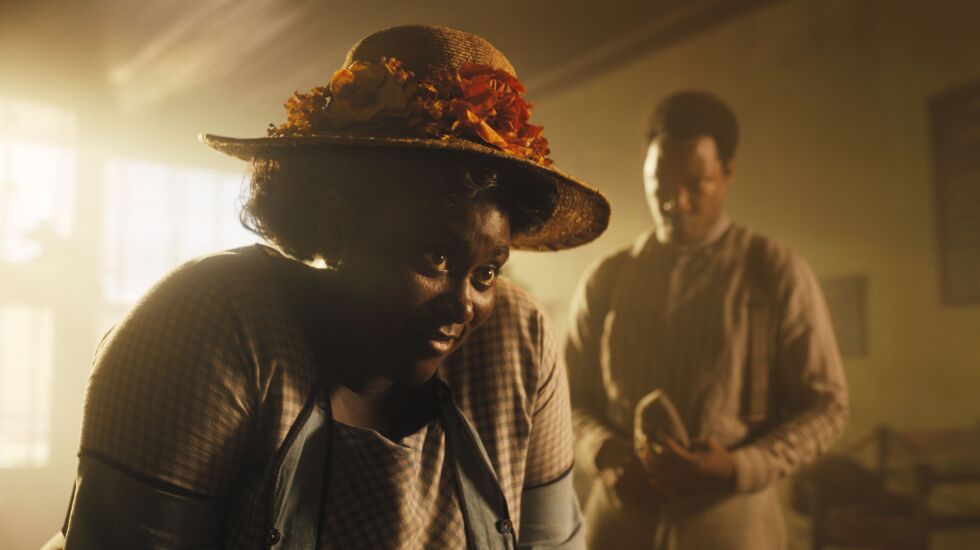
Hollywood and Broadway have a penchant for rebooting, revisiting, recycling and/or reimagining the same material through the decades in way that often feels like as much a money grab as a fresh approach to older material — but the fourth adaptation of “The Color Purple” proves the exception.
It’s a blazingly vibrant, emotionally resonant and exhilarating movie musical that does justice to Alice Walker’s iconic 1982 novel and the subsequent stage and movie versions while forging new creative paths and standing on its own as a bold and original work. What a powerful, gripping, heartbreaking, moving and ultimately uplifting tour de force by director Blitz Bazawule and one of the most impressive ensembles in any movie this year, led by nomination-worthy work from Fantasia Barrino, Danielle Brooks, Colman Domingo and Taraji P. Henson and extending all the way to the smallest of roles.
Steven Spielberg was of course the first to adapt Walker’s Pulitzer Prize-winning and generationally great novel with a 1985 prestige-piece blockbuster that garnered 11 Academy Award nominations but was criticized by some for reinforcing stereotypes and softening some of the harder edges of the source material. Next came the acclaimed 2005 original Broadway musical, followed by the leaner and equally well-received revival in 2015.
Eight years later, Bazawule (a multitalented artist perhaps best known for directing Beyoncé’s “Black Is King”) and screenwriter Marcus Gardley (“The Chi”) have delivered knockout work in a movie musical based on a musical that was based on a movie that was based on a book. It’s a long and winding road, as is the decades-spanning plot telling the story of a number of resilient women who survive, persevere and even thrive despite the unspeakable cruelty of men and the unforgiving world to which they’ve been born — a world that tells them from the outset they have little worth, a verdict they refuse to accept.
Over the span of a well-earned 141-minute running time, the filmmakers balance the grounded and often horrific sequences of drama with a bevy of musical numbers that will take you straight to church and have your feet bouncing in the aisles. It’s glorious.
With cinematographer Dan Laustsen making particularly good use of the Southern outdoor locales and the production design team creating authentic period sets for the grounded scenes, and exquisitely designed sets for the Broadway-style musical numbers that often delve into pure magical fantasy, “The Color Purple” opens on coastal George in 1909. Young sisters Celie (Phylicia Pearl Mpasi) and Nettie (Halle Bailey from “The Little Mermaid”) are best friends who find fleeting moments of happiness together when they’re away from their monstrous father Alfonso (Deon Cole), who has been raping Celie for years, resulting in two babies that are taken away and sold off almost immediately after being born. (The girls’ deceased mother is played by Aunjanue Ellis in flashbacks.)
When Celie is married off to the cruel and abusive Mister (Colman Domingo), she finds herself trapped in another kind of hell and she feels alone in the world after Nettie fends off Mister’s attempt to assault her and runs off, not to be heard from in many years.
When we flash forward to 1917, Fantasia Barrino (reprising her role from the mid-2000s Broadway production and national tour) has taken on the role of Celie, who is still living under the harsh and brutal hand of Mister but finds solace in her imagination and when she’s in the presence of two strong and independent women: Taraji P. Henson’s Shug Avery, a free-spirited jazz singer who is Mister’s occasional mistress but becomes Celie’s protector and, briefly, her lover, and Danielle Brooks’ Sofia, who is married to Mister’s son Harpo (Corey Hawkins) and is a room-dominating life force who takes s--- from no one and nobody, no way. Brooks’ brilliant and badass “Hell No” number might just be the scene that wins her best supporting actress, while Henson’s “Push the Buttons” is dripping with Southern sex and seduction.

This is at heart a true musical, and the vocal performances and the choreography dazzle throughout. Director Bazawule engages in some terrific flourishes of style and imagination, as when Shug takes Celie to the movies and the screen dissolves into a stunningly beautiful black-and-white set where they duet on “What About Love?”
At times the film seems almost overloaded with storylines, though each subplot features electric performances, whether it’s Shug attempting to reconcile with her estranged father, the Rev. Samuel Avery (David Alan Grier), or when the legendary Louis Gossett Jr. turns up as Ol’ Mister, who’s as much of a miserable cuss as his son and is appalled when Celie finally speaks her mind at the dinner table in a scene that ends with an applause-inducing moment. For all its depictions of misogyny, abuse, heartache and miscarriages of justice, “The Color Purple” is also filled with transcendent scenes of hope and dreams, and it brings the curtain down with a soaring note of enduring love.







